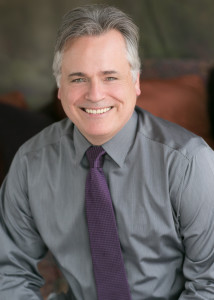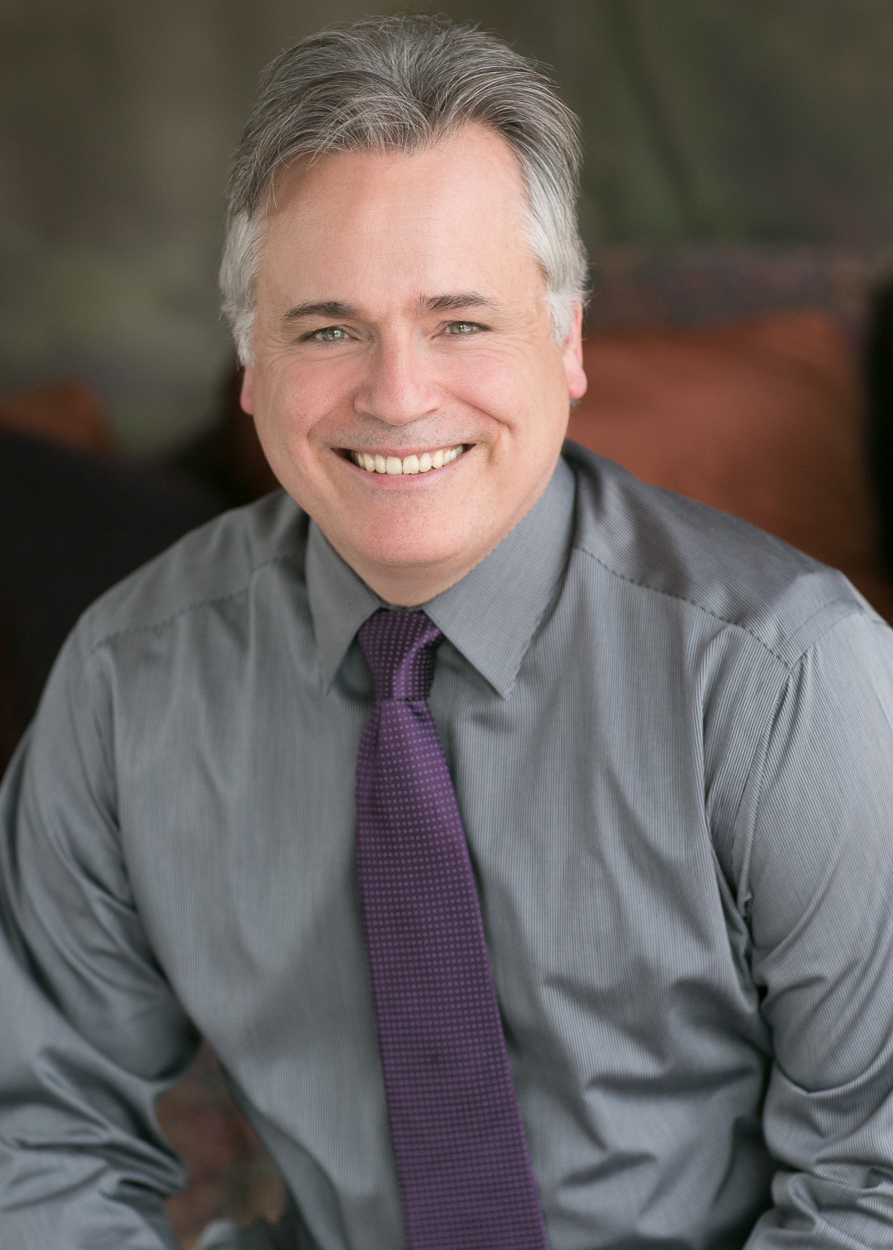Matt Faulkner is the author of “Gaijin: American Prisoner of War,” which won the 2014-2015 APALA Literature Award for Children’s Literature.
Molly Higgins: Please introduce yourself and briefly describe your literary work and career path to date.
Matt Faulkner: Hello, my name is Matt Faulkner. I’ve been an illustrator and author of books for children since 1985 when I first illustrated a version of “Jack and the Beanstalk.” Since then I have authored/illustrated 9 books, including “A Taste of Colored Water” and “Gaijin: American Prisoner of War.” as well as illustrated over 30 other picture books. I am fascinated by both history and by myth and fantasy and I do my best not to mix them up.
MH: We’re thrilled by your book, and we’ve noticed that you’re not Asian American. What inspired you to write about the internment of Japanese Americans?
 MF: Thank you very much. Two events inspired my wanting to write and illustrate the graphic novel “Gaijin: American Prisoner of War.” The first is the sad fact of the internment of Japanese/Americans in 1942. My great-aunt Adeline, her daughter Mary and Mary’s babies were part of the over 110,000 Japanese Americans who were imprisoned solely because of their race. I remember learning about the internment of my family from my mom when I was a boy. I found it unbelievable that our country would do such a thing to its own people, in particular to children. I have learned since then that two-thirds of those interned were kids, and this just floors me. What kind of paranoia and fear must grip a nation to bring it to the point where it finds it necessary to imprison children? The second event that inspired me was that, following the attacks of 9/11/01, I began to hear that some Americans felt that we, as a nation, should start building internment camps for Muslim Americans. I remember hearing that some Americans felt that Muslim Americans, simply because of their religion and heritage should be considered suspect. I knew then that it was time that I start doing sketches for “Gaijin.”
MF: Thank you very much. Two events inspired my wanting to write and illustrate the graphic novel “Gaijin: American Prisoner of War.” The first is the sad fact of the internment of Japanese/Americans in 1942. My great-aunt Adeline, her daughter Mary and Mary’s babies were part of the over 110,000 Japanese Americans who were imprisoned solely because of their race. I remember learning about the internment of my family from my mom when I was a boy. I found it unbelievable that our country would do such a thing to its own people, in particular to children. I have learned since then that two-thirds of those interned were kids, and this just floors me. What kind of paranoia and fear must grip a nation to bring it to the point where it finds it necessary to imprison children? The second event that inspired me was that, following the attacks of 9/11/01, I began to hear that some Americans felt that we, as a nation, should start building internment camps for Muslim Americans. I remember hearing that some Americans felt that Muslim Americans, simply because of their religion and heritage should be considered suspect. I knew then that it was time that I start doing sketches for “Gaijin.”
MH: You’ve illustrated other children’s books that tackle other aspects of race (like “A Taste of Colored Water”) and American history (like “Independent Dames”). Is there something that draws you to books for young people?
MF: I love good animated films. And I really love a good picture book. A good picture book or a good graphic novel is very much like a movie. I, as the illustrator, by creating just a few frames of art, give to the reader a visual starting place from which they can develop a whole animated experience in their mind. Think of it! Every time a kid picks up a book, they’re developing a visual story, character relationships, vibrant environments—a world of their own. It’s a fantastic process, complicated and subtle. And I feel so grateful that I get to participate in the process. As far as my desire to create books like “A Taste of Colored Water” and “Gaijin,” I just feel it’s important to offer children the opportunity to develop a discussion about what is working and what is not working in the world they live in. Kids, for the most part, simply haven’t developed the blinders that we as adults create for ourselves in regards to difficult topics like injustice and racism. In sharing both the books I mention above I have found children to be so excited to participate in the discussions which rise from my presentations. They appear to almost celebrate the freedom to express their fears, their hurts and concerns regarding these difficult topics which, in many ways, we as adults don’t wish to acknowledge.
MH: How do you think your personal identity influences your writing and/or the diversity of your readership?
MF: I come from a place (Eastern Massachusetts) and a time (the 1960s and 70s) and a heritage (Irish) and religion (raised a Catholic), and all these things bring an influence to the work I create. When I was trying to write “A Taste of Colored Water,” I was concerned that perhaps I, as a white male growing up in the North East, had no right to tell a story about bigotry in the South during the 1960s. I even went so far as to ask African American writer friends of mine if they’d consider writing the story for me. Luckily, I eventually realized that my concerns were based in my fears—fears that I wouldn’t be able to tell a convincing story, fears that, should the book become popular, I might become involved in the difficult discussions regarding race in our nation. Fears, lots of fears. It’s important that I acknowledge that my gender and skin tone have given me opportunities that others have not been given. It’s also important for me to recognize that storytellers—whether visual storytellers or storytellers who craft stories with words—are given a gift which comes with a responsibility: to tell the truth beautifully. This is a job we must embrace regardless of our race, creed, color or religion.
MH: We’re always looking for more to read. Who are five authors we should we be reading? Why?
MF: These are just some favorites of mine. Some, of course, you’ll know. Others, maybe not so much.
Writers: Mark Twain, Jacqueline Woodson and Andrew Smith—because they see/saw and record/recorded, with poetry and clarity, the soul of our country at a time when others wouldn’t or couldn’t.
Lois McMaster Bujold—as I said earlier, I love fantasy and this writer creates meaty science fiction stories which carry humor and an alternative viewpoint that I enjoy.
Artists: Kadir Nelson, Lisbeth Zwerger and Hayao Miyazaki—I just love the stuff these people create. They inspire and educate my soul.
MH: You’re being interviewed by a librarian, for an audience of progressive Asian American librarians. What are your thoughts on libraries and their place in building diverse communities?
MF: Very cool. Well, I’m married to a librarian so I feel very strongly about the tremendous value librarians bring to the lives of both individuals and to communities. Right now we’re hearing so much regarding the changing nature of our democracy—what is right for us as healthy national and local communities? This discourse can lead to restructuring, to cuts in funding, to downsizing etc. In the midst of all the national uproar, I see librarians continuing to support and build sanctuaries of community—sanctuaries of thought, safe places for growth that encourage open discourse. In my own community I’m seeing a movement toward our libraries quietly becoming the heart of the community—a place for scholars to do their research, for young parents to develop good parenting skills, for friends to gather and share a conversation about a good book over a cup of coffee. Lastly, I’ll just say that it didn’t surprise me when I learned that, during the unrest in Ferguson, Mo. last year, librarians were keeping their libraries open and offering creative programming to give children a place to go to because the schools had shut down. This is a very dramatic but also a very real example of the kind of quiet courage I see exhibited by librarians on a daily basis.
MH: What advice would you give young professionals, especially those from diverse backgrounds, who are interested in a career in writing and illustrating?
MF: You’ve been given a gift. Sometimes this gift may feel like a pair of wings. Other times it may feel like you’re dragging a large heavy package from door to door and no one seems to want you to share what you’ve got. It’s important for creators to remember that we are very important to the happy growth of our communities—as important as scientists, doctors and engineers. Our job is not to just entertain but to reveal. We are creating the Soul Maps for our people and our time. Speak your heart. Do what you love to do. Tell your stories. Because if we don’t, who will?
Editing assistance provided by Alyssa Jocson Porter.

